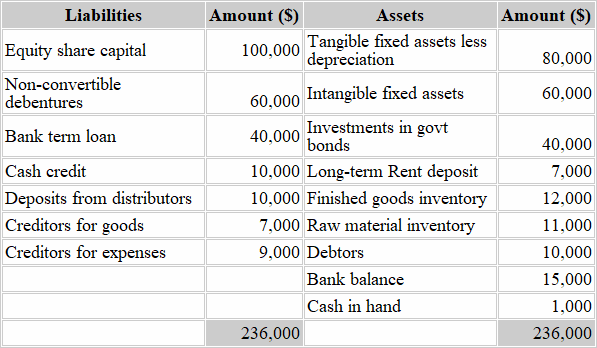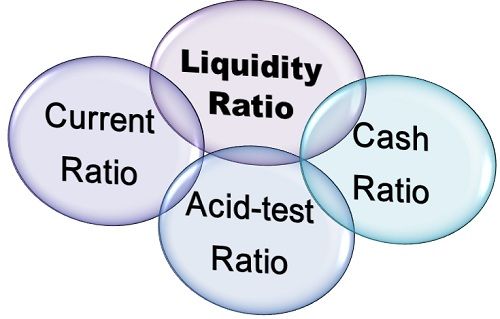
This suggests that Company E has improved its ability to pay its short-term debts and obligations over the past year. The current ratio is a number that helps investors understand how much short-term liability a company has in relation to its short-term assets. Short-term assets might include things like accounts receivable or inventory, as well as cash on hand, all of which you’ll find on the company’s financial statements.
Formula
An excessively high current ratio, above 3, could indicate that the company can pay its existing debts three times. It could also be a sign that the company isn’t effectively managing its funds. It measures how capable a business is of paying its current liabilities using the cash generated by its operating activities (i.e., money your business brings in from its ongoing, regular business activities). For every $1 of current debt, COST had $.98 cents available to pay for the debt at the time this snapshot was taken.
Related Skills for Accounting Careers
- However, if you look at company B now, it has all cash in its current assets.
- A business’ liquidity is determined by the level of cash, marketable securities, Accounts Receivable, and other liquid assets that are easily converted into cash.
- By dividing the current assets balance of the company by the current liabilities balance in the coinciding period, we can determine the current ratio for each year.
- Here, we’ll go over how to calculate the current ratio and how it compares to some other financial ratios.
- It’s particularly useful when assessing the short-term financial health of potential investment opportunities.
While the current ratio looks at the liquidity of the company overall, the days sales outstanding metric calculates liquidity specifically to how well a company collects outstanding accounts receivables. For example, a company may have a very high current ratio, but its accounts receivable may be very aged, perhaps because its customers pay slowly, which may be hidden in the current ratio. Analysts also must consider the quality of a company’s other assets vs. its obligations. If the inventory is unable to be sold, the current ratio may still look acceptable at one point in time, even though the company may be headed for default.
Risk Assessment – Why Is the Current Ratio Important to Investors and Stakeholders?

The current ratio is called current because, unlike some other liquidity ratios, it incorporates all current assets and current liabilities. The current ratio provides a general indication of a company’s ability to meet its short-term obligations, while the quick ratio provides a more conservative measure of this ability. In a recessionary environment, customers may delay payments or reduce their purchases, impacting the company’s cash flow and lowering the current ratio. Decreased current assets such as cash, accounts receivable, and inventory can lower the current ratio. This can happen if the company is experiencing lower sales or cannot collect payments from customers promptly.
Non-Current Assets Excluded – Limitations of Using the Current Ratio
Accountants also often use this ratio since accounting deals closely with reporting assets and liabilities on financial statements. Increased current liabilities, such as accounts payable and short-term loans, can also lower the current ratio. This can happen if the company takes on more debt to fund its operations or is experiencing delays in paying its suppliers. Some industries are seasonal, and the demand for their products or services may vary throughout the year. This can affect a company’s current ratio as it may need to maintain higher inventory levels to meet the demand during peak seasons.
Current Ratio Guide: Definition, Formula, and Examples
In this case, a low current ratio reflects Walmart’s strong competitive position. Ratios in this range indicate that the company has enough current assets to cover its debts, with some wiggle room. A current ratio lower than the industry average could mean the company is at risk for default, and in general, is a riskier investment.
The limitations of the current ratio – which must be understood to properly use the financial metric – are as follows. The Current Ratio is a measure of a company’s near-term liquidity position, or more specifically, the short-term obligations coming due within one year. By contrast, in the case of Company Y, 75% of the current assets are made up of these two liquid resources. A higher current ratio indicates strong solvency position of the entity in question and is, therefore, considered better. The current ratio is most useful when measured over time, compared against a competitor, or compared against a benchmark. This is markedly different from Company B’s current ratio, which demonstrates a higher level of volatility.
Founded in 1993, The Motley Fool is a financial services company dedicated to making the world smarter, happier, and richer. The Motley Fool reaches millions of people every month through our premium investing solutions, free guidance and market analysis on Fool.com, top-rated podcasts, and non-profit The Motley Fool Foundation. Find the best trucking accounting software for your business with our comparison guide. Read about features, pricing, and more to make the best decision for your company. Our intuitive software automates the busywork with powerful tools and features designed to help you simplify your financial management and make informed business decisions. Bench simplifies your small business accounting by combining intuitive software that automates the busywork with real, professional human support.
Company C is more liquid and is better positioned to pay off its liabilities. Being familiar with this consideration is crucial when it comes to interpreting current ratio values in finance. My Accounting Course is a world-class educational resource definition of ordinary income tax developed by experts to simplify accounting, finance, & investment analysis topics, so students and professionals can learn and propel their careers. As a general rule of thumb, a current ratio in the range of 1.5 to 3.0 is considered healthy.
For example, companies could invest that money or use it for research and development, promoting longer-term growth, rather than holding a large amount of liquid assets. For example, companies in industries that require significant inventory may have a lower quick ratio but still have a good current ratio. If the company is not generating enough revenue to cover its short-term obligations, it may need to dip into its cash reserves, which can lower the current ratio. The current ratio assumes that the values of current assets are accurately stated in the financial statements.
For example, in 2011, Current Assets were $4,402 million, and Current Liability was $3,716 million. However, if you look at company B now, it has all cash in its current assets. Therefore, even though its ratio is 1.45x, strictly from the short-term debt repayment perspective, it is best placed as it can immediately pay off its short-term debt. The current ratio may not be particularly helpful in evaluating companies across different industries, but it might be a more effective tool in analyzing businesses within the same industry. For example, a company’s inventory, which can prove difficult to liquidate, could account for a substantial fraction of its assets.
